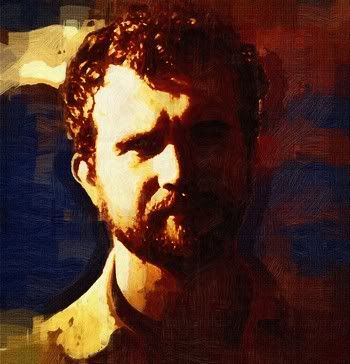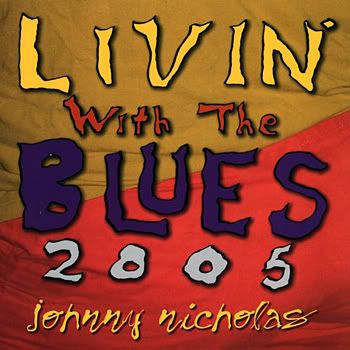
Zola Moon - Lost in the Blues - 1995 - Kent
Singer/songwriter Zola Moon was born in San Jose, CA., but her fierce intensity and powerful vocals might lead listeners to guess that she was raised someplace like Chicago or New York on the grounds that those are locales more thought of for producing artists of her depth and passion. She is self-taught, though she does acknowledge numerous musical influences, ranging from B.B. King and Muddy Waters to Jim Morrison and Led Zeppelin. Integrating those influences and many others, Zola Moon has, nonetheless, worked hard to keep her sound all her own. She began her career about 1983 in the San Francisco area. After 7 years of performing, which helped her grow a large fan base, she released a debut album in 1990. Titled "Dangerous Love", it was recorded on the Bare Moon Records label. Five years later and on a new label, the legendary Kent Records, she released "Lost In The Blues". It was followed in 1998 by "Almost Crazy" and then in 2000, "Earthquakes, Thunder and Smiling Lightning". 2002 brought "Down To My Bones" and in 2003 she released "Tales Of Love And Desperation". She has just come out with her seventh release, "Wildcats Under My Skin". © 2003-2009 MySpace.com. All Rights Reserved
Good postmodern Blues blues album from Zola Moon. The album has strong elements of soul, blues rock, folk, and roots music. Among her influences are Janis Joplin & Big Mama Thornton. She provides electrifying vocals and music, and has performed with Albert Collins, Etta James, Elvin Bishop, Albert King, Big Mama Thornton, Al Kooper, and Junior Wells among others. Buy her great "Earthquakes, Thunder and Smiling Lightning" album, and promote this great music
TRACKS / COMPOSERS
1. Blue Wind - Barry Levenson
2. Lost in the Blues - Barry Levenson
3. Ice Cold Kiss - Barry Levenson/Chuck Tripi
4. Imagination - Barry Goldberg/Gerry Goffin
5. Baby Get Lost - Billy Moore Jr.
6. Mother Earth - Barry Levenson
7. Party Boy - Barry Levenson
8. Dangerous Love - Barry Levenson
9. Radio Lover - Barry Levenson
10. Mean, Mean Man - Barry Levenson/Zola Moon
11. Funeral in New Orleans - Barry Levenson
MAIN MUSICIANS [ See CD sleeve for extra musicians ]
Zola Moon - Vocals
Barry Levenson - Guitars
Chuck Tripi - Keyboards
Blake Watson - Bass
Dave Kida - Drums
PRESS QUOTES
Zola Moon is one of the most critically acclaimed artists on CD Baby. Her astounding vocal virtuosity, grittily brilliant songwriting, and incredible intensity as a live performer have made her a force to be reckoned with for over 25 years. The quotes below are from magazines, newspapers, writers, reviewers, and DJs from around the world. Absolutely no vocal pitch correction or vocal augmentation was used in the making of this CD. *** "A charismatic singer with a restless, wailing sound, Zola Moon's literate original tunes exude a Charles Bukowski wit and a lyrical immediacy. This longtime vet remains one of the Southland's best-kept musical secrets."-- LOS ANGELES WEEKLY
*** "Zola Moon's pretty damn scary; she can belt 'em out like nobody's bidness. When she croons, she grabs you by your throat, knocks you out flat, sits on your chest, and makes sure you know how much she's hurtin'."-- ORANGE COUNTY WEEKLY
*** "Zola Moon's talent as a singer and a songwriter cannot be denied. She can be hurt by the end of a relationship or by economic hardship or by the state of the world, but she never gives in to self pity or despair; she's too tough, gutsy and hip for that. She keeps bouncing back and fighting back, because that's her nature; her voice won't be stilled. And what a voice it is, capable of hard-rockin' joy, bitter sorrow, deeply felt love."--THE SCOPE
SHORT BIO
Female blues singer and songwriter Zola Moon was born in San Jose, CA, but her powerful song stylings might mislead listeners to guess that she was raised in the Deep South of Louisiana or Mississippi on grounds better known for producing great blues artists. She is self-taught, though she does mention numerous musical influences, ranging from B. B. King and Muddy Waters to Hank Williams and Tina Turner. Even with all of those wonderful influences, Zola Moon has worked hard to keep her sound all her own. Zola Moon began her career in blues about 1983, in the San Francisco area. After seven years of performing, which helped her grow a large fan base, she finally released a debut album in 1990. It was titled Dangerous Love and recorded under the BareMoon Records label. Five years later, and with a new label, she finished work on an enjoyable sophomore offering, Lost in the Blues. It was followed in 1998 by Almost Crazy and then in 2000 by Earthquakes, Thunder, and Smiling Lighting. Some of the original blues tunes fans can sample on Zola Moon's albums are "Doll House," "Lucky Me," "I Look at the Fool," "Imagination," "Alley Cat," "Hollywood to the Hood," and "I Don't Think So." Over the years Zola Moon has performed at concerts, festivals, and nightclubs, appearing with many artists, including Etta James, Junior Wells, Al Kooper, Albert Collins, and Elvin Bishop. Her band consists of longtime drummer Jerry Olson, guitarist Vince "the Silver Fox" Joy, and bassist Ron Battle. © Charlotte Dillon, allmusic.com

MORE ABOUT ZOLA MOON
“For me, It’s always about the music,” says Zola Moon. “It’s like a painter who just has to paint that painting. I do it because I can, because I’m lucky enough to be able to do it, and because I have to. It’s an unstoppable drive. Artists do it because something makes them do it. Not the money,” she laughs. “Although, sometimes that helps.” Blues singer Zola Moon has been a consistent presence in Los Angeles for more years than we have fingers and toes, going back to the early and mid-1980s. When I first interviewed her, she had just released “Lost in the Blues” on the prestigious Kent Records label. That was early in 1995. The deal with Kent soured. “When I wanted to start writing my own material and controlling what I sang more, that became a problem for my guitar player and then musical director. So I fired him and the whole band. But we had had a long successful run. Because of my insistence on original material, we were selling original blues shows for 13 years, hammering out an identity, which can be very hard to do. We opened up a lot of doors for a lot of blues acts. We proved to the owners and bookers of a lot of venues, at a time when there were pretty well no blues venues, that the blues was viable.” That was ten years ago, and a year after that Zola released her first record of her own original material, “Almost Crazy.” Her fifth and latest CD of original songs (her seventh overall) “Wildcats under My Skin” is about to be released. When it comes to what she looks for and expects from her band, Zola is one savvy character. The ability to play well is not enough; her players have to have their chops, but they need to be fearless, too, and must be able to extemporize and turn on a dime like the alert, well-seasoned musicians they are. Zola calls her group The Pretty Boys, and the lineup consists of bassist Eric Williams, drummer Jerry Olson, guitarist Michael Carter. “Michael is a sensitive, exciting guitar player,” she says. He’s also got a jazz attitude, like me. There’s plenty of room for him to move, and he really delivers for me.” Williams is described as a solid, old school bass player, like Bill Wyman of The Rolling Stones. “Eric plays the bottom, you know, and he is rock steady.” And Olson? “Jerry is the engine of the band. He will put on a show for you. I have had him in every kind of circumstance or show. Jazz clubs where they want a lower volume show, not a boring show, but lower, which is hard for some drummers to do, to huge outside concerts in front of thousands of people where I need a real fire drummer with lots of power and energy. Jerry always delivers what I need. My group always delivers what I need; I love them.” This is the band that recorded “Wildcats under My Skin” on an analog 2-inch tape machine at Dino M4 Studio in Torrance, CA. In this digital age, analog tape is going the way of the dinosaur, but for some musicians it is still the only way to go for its wide sonic range and big sound. The album contains eleven tracks, all of them penned by Zola, with the exception of a little help from Cynthia Manley and Jessica Williams on “Boat Man.” The record also has guest appearances by Ricky Stelma on piano and accordion, Elizabeth Hangan on back-up vocals, and Jimmy Z on saxophone and harmonica. Zola says she can be nervous about a new release at first, but that she’s already sold on her latest, “which I liked immediately. I think it’s because of ‘Tequila Dreams.’ ” At eight and a half minutes, “Tequila Dreams” is by far the longest track, but it stands out in a good way, in part because of its surreal narrative, Zola’s mesmerizing vocals, and Jimmy Z’s sinuous and slithering sax work that plays well against the solid foundation set down by the bass and drums. “ ‘Tequila Dreams’ is a combination of -- yes, I confess – drinking mescal and eating the worms in Tijuana,” Zola says with a loud laugh. “It’s kind of a mescal hallucination. But it’s also the story of the rise of the Insect Queen who dominates the world at the end of Earth’s life-cycle in the solar system.” She then additionally describes the contents of the song which don’t get any less surreal and ends by saying, “So that’s the story of the Dowager Empress Worm Commissioner of the World.” We agree that it’s very Jim Morrison-like, and for me reminiscent of “Beggars Banquet”- era Stones without being derivative of either Mick Jagger or Jim Morrison. Not surprisingly, a list of Zola’s influences puts her own work into perspective, and conveys something of the standards she sets for herself when composing and performing. When asked who has impressed her, she mentions Patti Smith, both as a lyricist and for her Jim Morrison-like spirit. She quickly adds others: Charles Bukowski, Buddy Guy, Kurt Cobain, Janis Joplin, Etta James, Linda Hopkins, Big Mama Thornton. Some of these artists, those still with us, have been slogging away at their art – at times without due recognition – for year after year. So how does Zola keep herself going, particularly after – and I assume that all artists have some – a show not up to her exacting standards? “Me and my band are what you would call the last of the roadhouse warriors,” she replies, “and you only feel as good as your last show. So even if it’s a night that there’s not a lot of people there, you still have to make it happen. If those people are excited after the show, you can walk out with your head high. It’s what you have to do. Every show matters. And that is hard to do – but some of us long-distance runners learn how to do that.” As strenuous as they sometimes can be, the live shows inevitably fuel the recordings. “You know, I still believe in the work ethic. To get out there and work the band in front of a real audience tells you more about where you are and the legitimacy of what you’re doing than any kind of record company executive – they live in a different, artificial world. But when you’re out there with people watching your show, and they love you, and you’re doing original material, you know you’re on the right track. That’s why my CDs come out of my live shows. I learned a hard lesson in the past, where you go in and let a producer do what they think the record company wants, and then your fans go, ‘What’s this? This isn’t you.’ Now I take my boys into the studio, no studio players, and I do what I want. “ Often the kernel of a new song evolves while Zola is singing onstage. “A lot of the time it’s the hook and the melody line, it’s all there. Other times it’s the melody line and the story. If the story’s there, the rest will come later.” On occasion, when she’s writing the lyrics, she’ll solicit suggestions from her producer, Richard Vidan, who has overseen her recordings and shows for several years. Although there is a certain autobiographical element in many of Zola’s songs, one can’t fail to notice that her music is billed as postmodern blues, and to a large extent, that is due to her wide range of subject matter, which often parts company with the usual laments of desire and despair that pervade most songs, whether pop, country, or blues. “I think this why postmodern is a good explanation for what I do,” she says, and this is referring to her political and social commentary. But there’s another aspect as well. “I’ve come to realize in the past year that we’re a blues-based band with what I would Americana-roots rock influences. Although it’s all blues-based, some of the blues purists probably don’t think it’s not blues or not blues enough. They’re the same people that don’t like Janis Joplin or Stevie Ray Vaughn or Buddy Guy’s recent work.” Zola acknowledges their viewpoint, but doesn’t seem overly concerned about not fitting neatly into someone’s narrow definition of what they think the genre should be. “We are different, this is true. I’m in love with the blues, always have been. But we are different. I’m doing my blues.” © Bondo Wyszpolski, © 1998-2008 Postmodern Music



















